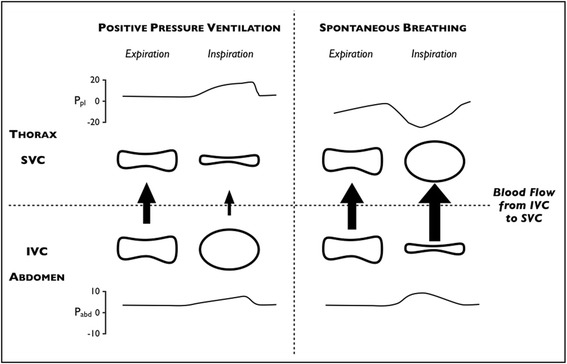Fig. 3.

Shape of the intra- and extrathoracic veins in different transmural pressure conditions (heart–lung interactions). Changes in pleural pressure (P pl), abdominal pressure (P abd), the shape of the superior and inferior venae cavae (SVC and IVC, respectively), and the amount of blood flow (arrows) from the abdomen to the thorax during mechanical ventilation (left panel) and spontaneous breathing (right panel). During positive pressure ventilation, the increased pleural pressure squeezes the SVC and reduces blood flow from the abdominal compartment. This induces a distention of the IVC, favoring blood drainage to the extracorporeal circuit. During spontaneous breathing with high inspiratory effort, the significant decrease in pleural pressure dilates the SVC and increases blood flow from the abdominal compartment. This may induce a collapse of the IVC, hindering blood drainage to the extracorporeal circuit
